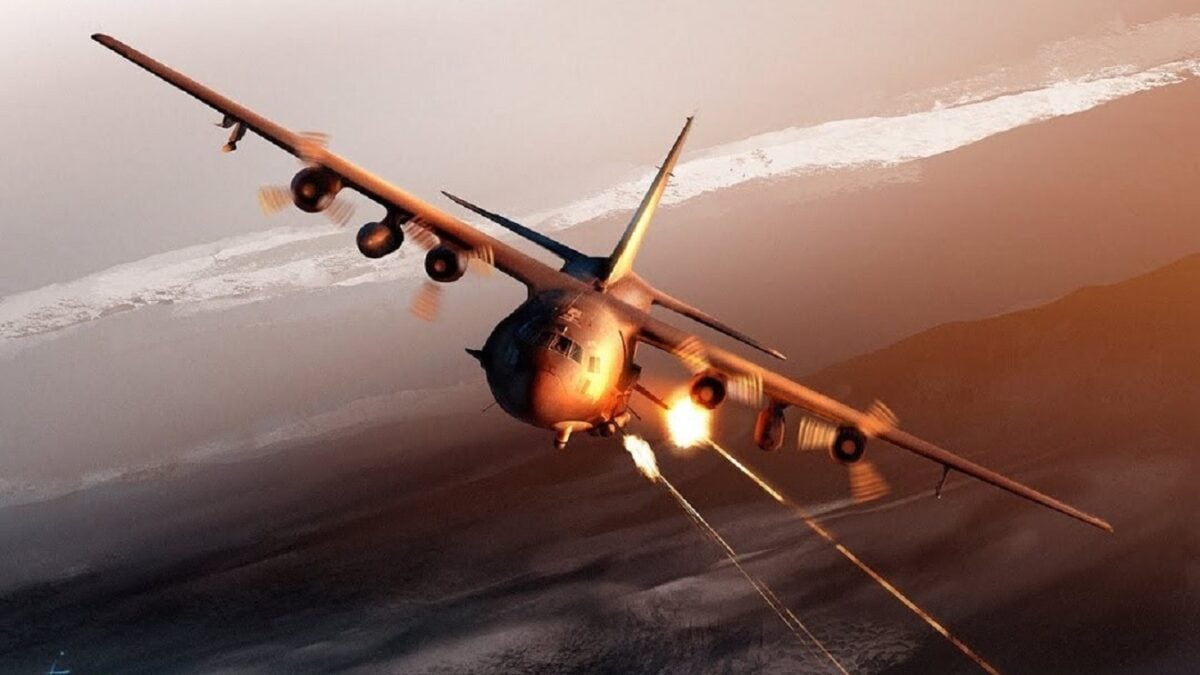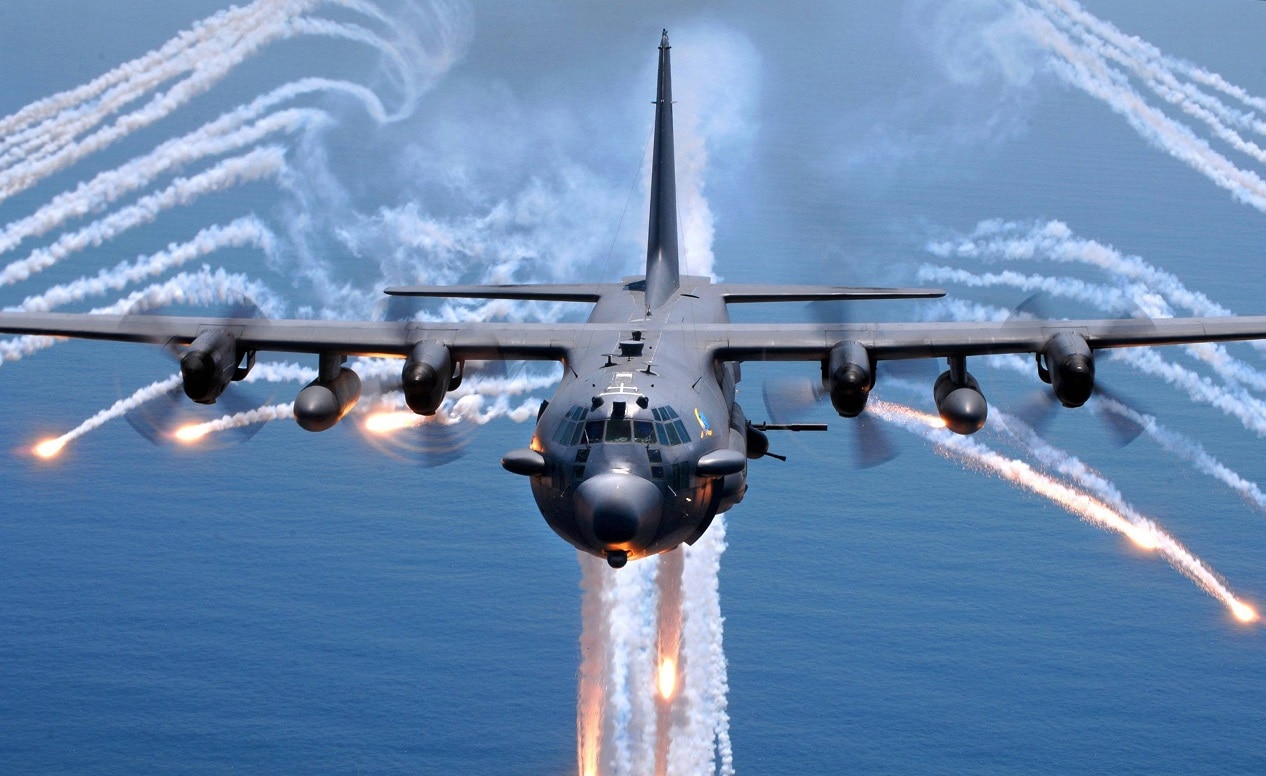I’ve ridden in my share of C-130s when I was in the Army. The cargo and transport airplane is loud and will shake your teeth out. One rough ride almost made me want to throw up (I was dipping tobacco at the time, and it made me queasy). I never imagined the C-130 could be used as a missile truck someday.
Of course, the AC-130 is a formidable gunship, I knew about that, but launching missiles from the airframe never occurred to me. But that’s what the Air Force wants to try with its Rapid Dragon program.
Fire a Missile Out of a C-130? Why Not?
The idea is to simply load the missiles on to a pallet and push them out the rear door. The pallets would use parachutes to drift down until launch. The Air Force has the ubiquitous C-130 in large numbers. Lockheed has built more than 2,500 C-130s of various configurations over the years. No modifications on the airplanes would be necessary if all goes well.
How About Use Against China?
Kyle Mizokami of Popular Mechanics believes this could be a game changer in the Indo-Pacific, especially if a conflict over Taiwan lights up like a brush fire. Mizokami thinks the Rapid Dragon missile launching concept could be used on other cargo planes such as the C-17 and Japanese C-2. This would give the allies hundreds of missiles to destroy high value enemy targets and ships. These could eliminate the Chinese carrier killing missiles enabling U.S. Navy strike groups to steam into range and start the real war against China.
Bomb Bay in a Box
It’s a scenario that sounds too good to be true. But U.S. Air Force special ops personnel successfully tested the concept off the coast of Norway on November 9. Rapid Dragon is also called “bomb bay in a box.” That’s the basic idea that was evaluated. An MC-130J Commando II from the 352nd Special Operations Wing shot a Joint Air-to-Surface Standoff Missile-Extended Range cruise missile with the system in the Arctic Circle. Bomb bay in a box could also fire the Long-range Anti-Ship Missile. The C-130 could carry six missiles and a C-17 could launch nine.
Plenty of Extra Cargo Planes World-wide
Lt. General Jim Slife, head of the Air Force Special Operations Command, said bomb bay in a box can take advantage of all the cargo planes stationed with allies around the world. Many air forces would like to have the capability of large bombers that could fire stand-off missiles but cannot develop their own systems due to limitations of their own aerospace industries and cost. This is where bomb bay in a box steps in.
C-130 Missile Truck: The Concept Is Simple
This is an experimental program led by the Air Force Research Laboratory. It works like this. One main parachute guides the missile package downward then four other parachutes keep it steady. The box turns vertical then out pops a missile and its wings and tail open. The engine fires up and away the cruise missile goes. The cargo plane can fly home, load up more boxed missiles, and do it again. This is a simple step-by-step process that should yield something to behold. Roll on, roll off, repeat.
That’s not all. The Air Force is looking at dropping more diverse pallets containing not just munitions but inventions such as intelligence gathering modules. And the branch is looking at testing different missiles.

AC-130 Gunship. Image Credit: Creative Commons.
This force-multiplier means that the Air Force could free up its other attack aircraft for additional missions. Rapid Dragon would enable massive strikes on the pivotal first day of warfare. And think of all the allies with C-130s that could attack Russia or China someday if needed. The Air Force hasn’t revealed how much bomb bay in a box costs, but the pallets should not be that expensive, not counting the price of each missile. This kind of innovative thinking is a way to outsmart U.S. adversaries and continue to iterate good ideas and bring them to fruition. Bomb bay in a box, if it continues to show promise, has the potential to enlarge capabilities for airplanes that wouldn’t normally have attack capacity. This brings more players to the fight.
Expert Biography: Serving as 1945’s Defense and National Security Editor, Dr. Brent M. Eastwood is the author of Humans, Machines, and Data: Future Trends in Warfare. He is an Emerging Threats expert and former U.S. Army Infantry officer. You can follow him on Twitter @BMEastwood. He holds a Ph.D. in Political Science and Foreign Policy/ International Relations.

